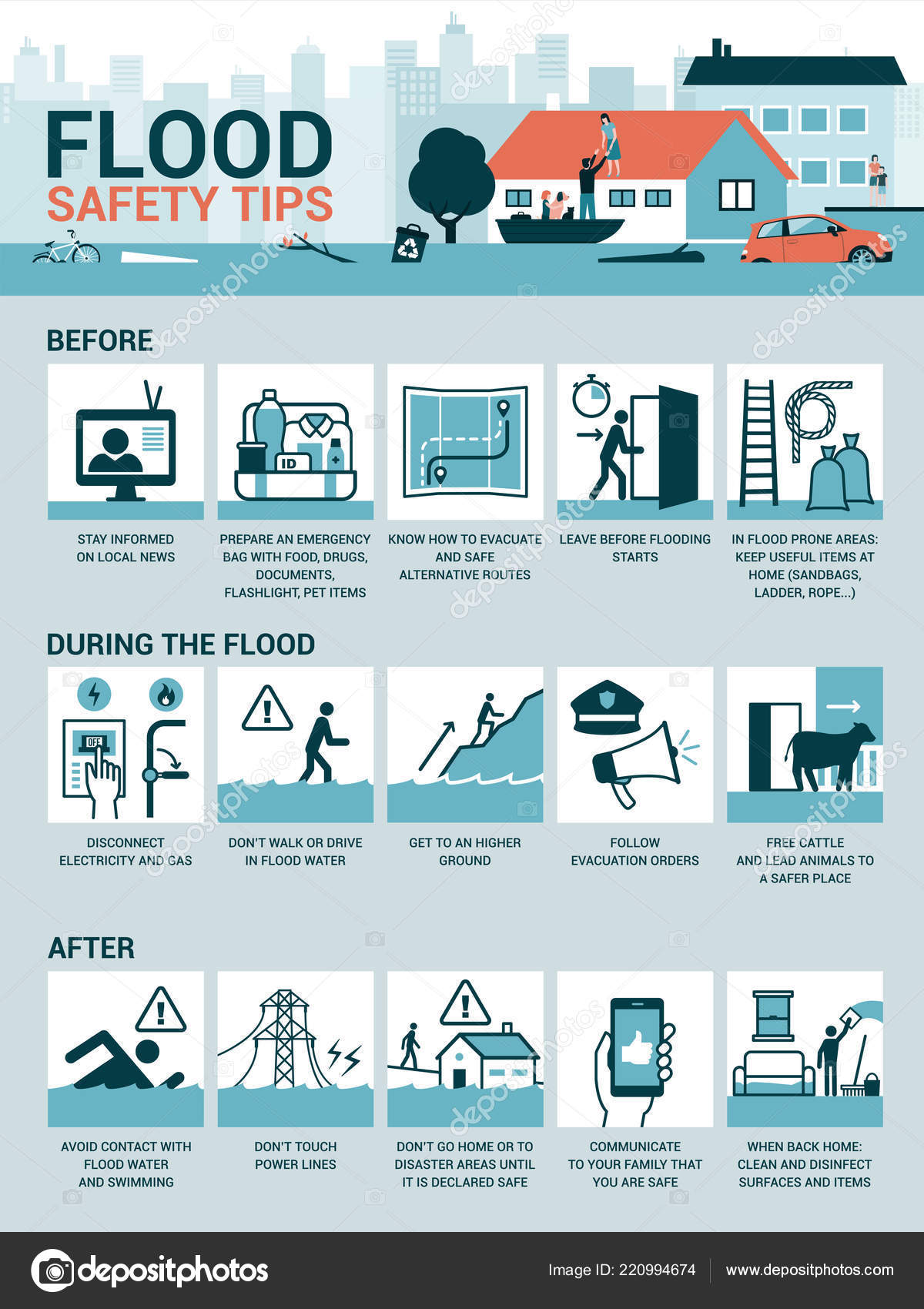Protecting Yourself And Your Home: Flood Safety On Day 5

Table of Contents
Assessing the Damage and Reporting to Authorities
Before starting any flood cleanup, a thorough flood damage assessment is paramount. This crucial first step allows you to understand the extent of the damage and begin the process of recovery and repair. This assessment informs your insurance claim and helps you access potential disaster relief.
- Document all damage with photos and videos. This detailed documentation serves as irrefutable proof for your insurance claim, speeding up the process and ensuring you receive the compensation you deserve. Take pictures from multiple angles, capturing the overall damage and specific details.
- Contact your insurance company to file a claim immediately. Don't delay! Most insurance policies have deadlines for reporting flood damage, so prompt action is key. Have your policy information readily available and be prepared to provide detailed information about the damage.
- Report damage to local authorities for potential disaster relief assistance. Many local, state, and federal agencies offer assistance after major flooding events. Reporting the damage allows you to access potential financial aid, debris removal services, and other support programs.
- Check for structural damage – consult a professional if needed. Floodwaters can weaken foundations and compromise the structural integrity of your home. If you notice any cracks, settling, or other structural issues, contact a qualified structural engineer or contractor immediately for a professional assessment. Ignoring structural damage can lead to significant problems down the line.
Safe Flood Cleanup Procedures
Floodwater is extremely dangerous, often contaminated with sewage, chemicals, and other hazardous materials. Proper flood cleanup procedures are vital for both your health and the long-term well-being of your home. Prioritizing your safety during this phase cannot be overstated.
- Wear protective gear (gloves, boots, masks, eye protection). This is non-negotiable. Floodwater is rife with bacteria and pathogens, making protective gear essential. Use waterproof boots, heavy-duty gloves, and an N95 mask to minimize your exposure to harmful substances. Eye protection will prevent irritation from debris and chemicals.
- Use appropriate cleaning supplies and disinfectants. Regular household cleaners are insufficient. Use strong disinfectants specifically designed for mold and mildew removal, following the manufacturer's instructions carefully. This is crucial for preventing the spread of bacteria and mold.
- Remove all wet materials (carpeting, drywall, etc.). Wet materials are breeding grounds for mold and mildew, and they will likely need to be replaced. Remove them promptly and dispose of them properly.
- Avoid contact with standing water. Never walk through standing floodwater without proper protection. The water may be deeper or more contaminated than you think.
- Be mindful of mold growth – take preventative measures or call professionals. Mold can grow quickly in damp environments, leading to serious health problems. Start by thoroughly drying your home. Use dehumidifiers and fans to accelerate the drying process. If you notice mold growth, it's crucial to contact mold remediation professionals, as improper handling can worsen the problem.
- Dispose of contaminated materials properly. Do not simply throw contaminated materials into your regular trash. Contact your local waste management authority to learn about proper disposal procedures for flood-damaged materials.
Dealing with Electrical Hazards
Never enter a flood-damaged building with standing water if the power is still on. Electrical hazards pose a severe risk of electrocution, making this a critical area of focus. Even after the water recedes, hidden dangers remain.
- Turn off all power at the main breaker before entering. This is the first and most critical step. Turning off the power at the main breaker eliminates the risk of electrocution.
- Do not touch electrical equipment or wires exposed to water. Even seemingly dry equipment might be electrically charged.
- Contact a qualified electrician for inspection and repairs. A professional electrician should inspect your entire electrical system before restoring power to prevent further damage or injury.
- Avoid using damaged electrical appliances. Even seemingly undamaged appliances may have internal damage and should be inspected before reuse.
Preventing Future Flood Damage
Proactive steps after a flood significantly reduce your risk in future events. Flood prevention and mitigation are essential for long-term protection.
- Install flood barriers or water-resistant materials. Consider installing flood barriers around your property or using water-resistant materials in vulnerable areas.
- Improve drainage around your property. Ensure proper grading and drainage to divert water away from your home.
- Elevate electrical outlets and appliances. Elevating these items reduces the risk of water damage during future floods.
- Consider home elevation if feasible. Raising your home's foundation is a significant but effective flood mitigation strategy.
- Participate in community flood mitigation efforts. Community efforts can make a huge difference in reducing overall flood risk.
Conclusion
Day 5 after a flood demands vigilance and careful action. By assessing the damage, cleaning safely, prioritizing electrical safety, and investing in flood prevention measures, you can protect yourself, your family, and your home. Remember, seeking professional help for significant damage is crucial for ensuring long-term safety and recovery. Don't delay – take action today to strengthen your flood safety measures. Learn more about comprehensive flood safety and mitigation strategies at [link to relevant resource].

Featured Posts
-
 George Russells Crucial Decision Solving Mercedes Key Flaw
May 26, 2025
George Russells Crucial Decision Solving Mercedes Key Flaw
May 26, 2025 -
 D C Pride 2024 A Comprehensive Guide To Events And Activities
May 26, 2025
D C Pride 2024 A Comprehensive Guide To Events And Activities
May 26, 2025 -
 Albert De Monaco Vacances Lluny De Charlene Amb Una Actriu Famosa
May 26, 2025
Albert De Monaco Vacances Lluny De Charlene Amb Una Actriu Famosa
May 26, 2025 -
 Has Armando Iannucci Lost His Creative Spark An Analysis
May 26, 2025
Has Armando Iannucci Lost His Creative Spark An Analysis
May 26, 2025 -
 Bayerns Neuer Faces Further Injury Delay Key Games In Doubt
May 26, 2025
Bayerns Neuer Faces Further Injury Delay Key Games In Doubt
May 26, 2025
